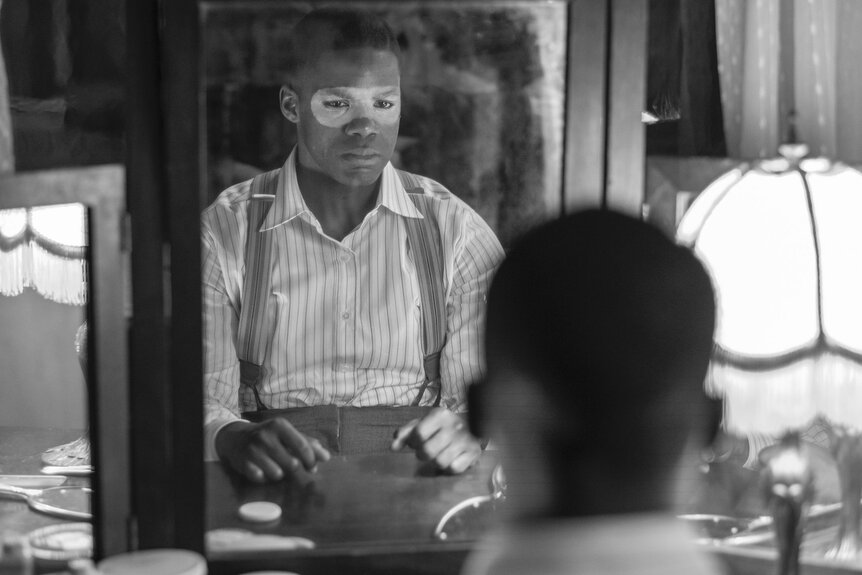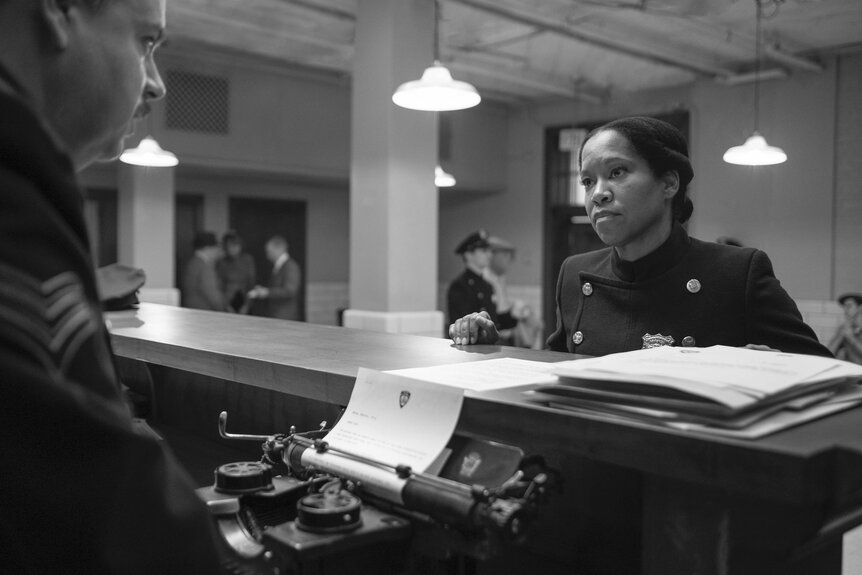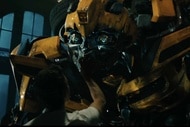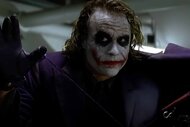Create a free profile to get unlimited access to exclusive videos, sweepstakes, and more!
How Watchmen's incredible Hooded Justice twist happened, and what it means

HBO’s Watchmen series has largely been a decades-later sequel to the original graphic story, rather than an adaptation that would directly impact the seminal graphic novel. But, the sixth episode, “This Extraordinary Being,” flashes back to the past and dramatically changes — and recontextualizes — what we thought we knew about one of the original heroes of Watchmen’s world.
SYFY WIRE caught up with Cord Jefferson and Stephen Williams, the writer and director of the episode, respectively, and got them to explain the origins and meanings of the jaw-dropping Hooded Justice twist.
**SPOILER ALERT: This article will fully spoil the entirety of Watchmen Episode 6.**
The vast majority of Episode 6 is told via flashbacks — curated memories that a comatose Angela Abar (Regina King) is experiencing after taking all of the Nostalgia pills her mysterious grandfather, Will Reeves (Louis Gossett Jr.), left her. Through these memories, we learn that young Will (Jovan Adepo) was actually Hooded Justice, the original superhero who inspired the ‘40s-era Minutemen and, as we learned, brought down a horrifying racist conspiracy without the help of the law or his fellow so-called heroes.
It’s a big twist.
Hooded Justice is a relatively minor figure in Moore’s original comic, and it’s safe to assume that, for decades, most readers thought that he was a white man underneath the hood. American Hero Story, the Watchmen Universe’s dramatized retelling of the Minutemen’s tale, makes the same assumption, as Cheyenne Jackson (who is half Native American but is mostly cast in white roles) plays him in the episode’s opening moments.
Jefferson told SYFY WIRE that it was showrunner Damon Lindelof’s idea to reveal that Hooded Justice was actually a black man underneath the costume. While longtime Watchmen fans might think that was a drastic or surprising twist, Jefferson, who was not familiar with the comic before joining Lindelof’s writers room, found it made perfect sense.
“I think it may have been a radical idea for people who have, who've loved to be the book for a very long time, but it didn't seem like a very radical idea to me,” Jefferson said.
“The most ridiculous superhero in the world to me right now is Batman,” Jefferson explained. “The idea that a billionaire white guy in [Gotham], would need to seek out justice via unorthodox means because he can't get justice in a traditional way is ridiculous, right? Billionaire white guys pretty much get to do whatever they want, they get to buy entire justice systems and they feel like.”
Jefferson’s description of Batman certainly applies to Captain Metropolis and the other original Minutemen who make small appearances in the episode. They’re mere “dilettantes” who fight crime on a lark and aren’t actually affected by or concerned with the very real threats that Will and the black community are facing.
“When we started thinking about what a superhero might look like in the 1930s, it's like, ‘who might be the person likeliest to seek justice outside the traditional means of obtaining justice?’” Jefferson continued. “‘Who in the 1930s might be the person most likely to, to head down that path?’ Oh, of course, it's a black person, right?”
Hooded Justice’s costume, complete with a dangling hangman’s noose, made the reveal even more natural, because it’s an implicit symbol of racial violence.
“There's no [other] way to look at a noose around somebody's neck, at least as a person of color,” Jefferson said. “Damon's idea felt perfectly aligned with what I was taking from the material when I read the book.”
It helped that Lindelof, Jefferson and the rest of the writers didn’t need to do much actual retconning to the original text. Hooded Justice never removes his mask and even the original Nite Owl’s tell-all book makes it clear that nobody knew, for sure, who he really was.
“There's nothing that says, in the original text, that he can't be black,” Jefferson explained. “Basically every panel in the comic books, he has those kind of 'Batman eyes' where the hood sits perfectly flush around his eyeballs.”
There’s one panel — part of the scene where Hooded Justice stops the Comedian from further sexually assaulting Silk Spectre, where you can see the white around the characters’ eyes.
“That was really the difficult panel for us,” Jefferson admitted, although the decision to have Will paint his face white both solved the problem and added for an intriguing bit of mirrored symbolism, as his granddaughter adorns her eyes with black paint as part of her Sister Night costume.
Watchmen’s sixth episode, and its reveal that Will became Hooded Justice in large part because the police force for which he worked had explicitly racist members and connections, helps counterbalance an early critique of the HBO show — that it problematically simplified this complex American issue into “cops versus racists.”
“I understood that criticism when the show came out, but I was hoping that people would keep with it and then keep watching to sort of see where we went with the story,” Jefferson admitted. With Episode 6, though, “we were happy to acknowledge that in fact [racism and law enforcement] work in conjunction with one another throughout much of American History — and they still do.”
When it came to bringing Hooded Justice’s origin story to the screen, director Stephen Williams — who worked extensively with Lindelof on Lost — told SYFY WIRE that a “torrent of images was unleashed” when Lindelof first told him about Will Reeves' secret identity. “I started to see and experience the way in which I would want to visually inhabit that particular characters’ origin story,” he continued.
The black and white, dream-like aesthetic of the episode was a natural extension of its premise, which is that Angela is essentially “tripping” on Will’s curated memories. Williams called it “a deep subjective immersion of a character not just being told or told about or sharing another characters’ memories but actually living and walking in the shoes of that character.
“The piece required a visual grammar that would allow you to go on that subjective journey that also happened to be set in the past,” he continued.
Yet, despite the ‘30s and ‘40s setting of the episode, the racism Will Reeves encounters feels very current. Members of Cyclops, the racist conspiracy inciting violence among black Americans with mesmerism, identify themselves by making an eye-like, “O.K.” symbol on their forehead. It reads as a thoroughly modern reference, but it was actually an unfortunate confluence of events.
In 2017, users of the message board 4chan started a “hoax” where they attempted to trick the mainstream media into thinking that the “O.K.” hand gesture was a white power symbol. The “joke” became wide-spread enough that it ultimately didn’t matter if the gesture was supposed to be a troll. Enough members of the alt-right were flashing it that in September 2019, the Anti-Defamation League officially designated it as a symbol of hate.
“There's a lot of stuff in this episode that feels like it's been ripped from the headlines, like Law & Order style. But I assure you that everything that we did in this episode was written well before those things started happening,” Jefferson explained.
“We were trying to do that circle like an eye on the forehead and then all of a sudden we realized that this was now a symbol of the alt-right,” he continued. “It was an unhappy coincidence.”




























